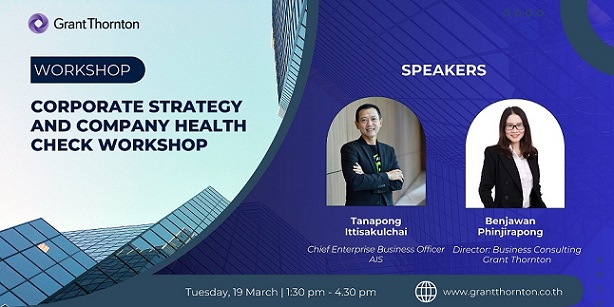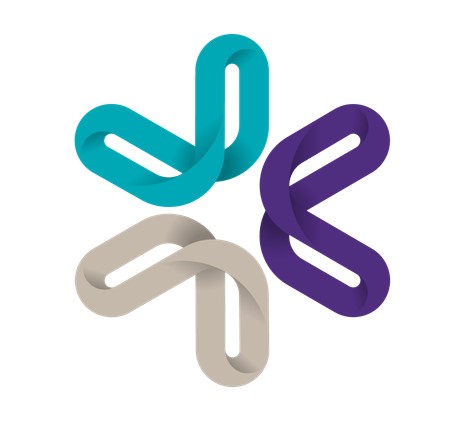-
Internal audit
In today's increasingly competitive and regulated market place, organisations - both public and private - must demonstrate that they have adequate controls and safeguards in place. The availability of qualified internal audit resources is a common challenge for many organisations.
-
IFRS
At Grant Thornton, our International Financial Reporting Standards (IFRS) advisers can help you navigate the complexity of financial reporting so you can focus your time and effort on running your business.
-
Audit quality monitoring
Having a robust process of quality control is one of the most effective ways to guarantee we deliver high-quality services to our clients.
-
Global audit technology
We apply our global audit methodology through an integrated set of software tools known as the Voyager suite.
-
Looking for permanent staff
Grant Thornton's executive recruitment is the real executive search and headhunting firms in Thailand.
-
Looking for interim executives
Interim executives are fixed-term-contract employees. Grant Thornton's specialist Executive Recruitment team can help you meet your interim executive needs
-
Looking for permanent or interim job
You may be in another job already but are willing to consider a career move should the right position at the right company become available. Or you may not be working at the moment and would like to hear from us when a relevant job comes up.
-
Practice areas
We provide retained recruitment services to multinational, Thai and Japanese organisations that are looking to fill management positions and senior level roles in Thailand.
-
Submit your resume
Executive recruitment portal
-
Update your resume
Executive recruitment portal
-
Available positions
Available positions for executive recruitment portal
-
General intelligence assessments
The Applied Reasoning Test (ART) is a general intelligence assessment that enables you to assess the level of verbal, numerical reasoning and problem solving capabilities of job candidates in a reliable and job-related manner.
-
Candidate background checks
We provide background checks and employee screening services to help our clients keep their organisation safe and profitable by protecting against the numerous pitfalls caused by unqualified, unethical, dangerous or criminal employees.

-
Capital markets
If you’re buying or selling financial securities, you want corporate finance specialists experienced in international capital markets on your side.
-
Corporate simplification
Corporate simplification
-
Expert witness
Expert witness
-
Family office services
Family office services
-
Financial models
Financial models
-
Forensic Advisory
Investigations
-
Independent business review
Does your company need a health check? Grant Thornton’s expert team can help you get to the heart of your issues to drive sustainable growth.
-
Mergers & acquisitions
Mergers & acquisitions
-
Operational advisory
Grant Thornton’s operational advisory specialists can help you realise your full potential for growth.
-
Raising finance
Raising finance
-
Restructuring & Reorganisation
Grant Thornton can help with financial restructuring and turnaround projects, including managing stakeholders and developing platforms for growth.
-
Risk management
Risk management
-
Technology & Digital Services
Technology Services
-
Transaction advisory
Transaction advisory
-
Valuations
Valuations
-
Human Capital Consulting
From time to time, companies find themselves looking for temporary accounting resources. Often this is because of staff leaving, pressures at month-end and quarter-end, or specific short-term projects the company is undertaking.
-
Strategy & Business Model
Strategy & Business Model
-
Process Optimisation & Finance Transformation
Process Optimisation & Finance Transformation
-
System & Technology
System & Technology
-
Digital Transformation
Digital Transformation
-
International tax
With experts working in more than 130 countries, Grant Thornton can help you navigate complex tax laws across multiple jurisdictions.
-
Licensing and incentives application services
Licensing and incentives application services
-
Transfer pricing
If your company operates in more than one country, transfer pricing affects you. Grant Thornton’s experts can help you manage this complex and critical area.
-
Global mobility services
Employing foreign people in Australia, or sending Australian people offshore, both add complexity to your tax obligations and benefits – and we can guide you through them.
-
Tax compliance and tax due diligence review services
Tax compliance
-
Value-Added Tax
Value-Added Tax
-
Customs and Trade
Customs and Trade
-
Service Line
グラントソントン・タイランド サービスライン
-
Business Process Outsourcing
Companies, large and small, need to focus on core activities. Still, non-core activities are important, and they need to be leaner and more efficient than most companies can make them sustainably. For Grant Thornton, your non-core activities are our core business. Grant Thornton’s experienced outsourcing team helps companies ensure resilience, improve performance, manage costs, and enhance agility in resourcing and skills. Who better to do this than an organisation with 73,000 accountants? At Grant Thornton we recognise that that outsourcing your F&A functions is a strategic decision and an extension of your brand. This means we take your business as seriously as we take our own.
-
Technology and Robotics
We provide practical digital transformation solutions anchored in business issues and opportunities. Our approach is not from technology but from business. We are particularly adept at assessing and implementing fast and iterative digital interventions which can drive high value in low complex environments. Using digital solutions, we help clients create new business value, drive efficiencies in existing processes and prepare for strategic events like mergers. We implement solutions to refresh value and create sustainable change. Our solutions help clients drive better and more insightful decisions through analytics, automate processes and make the most of artificial intelligence and machine learning. Wherever possible we will leverage your existing technologies as our interest is in solving your business problems – not in selling you more software and hardware.
-
Technical Accounting Solutions
The finance function is an essential part of the organisation and chief financial officer (CFO) being the leader has the responsibility to ensure financial discipline, compliance, and internal controls. As the finance function is critical in every phase of a company’s growth, the CFO role also demands attention in defining business strategy, mitigating risks, and mentoring the leadership. We offer technical accounting services to finance leaders to help them navigate complex financial and regulatory environments, such as financial reporting and accounting standards, managing compliance requirements, and event-based accounting such as dissolutions, mergers and acquisitions.
-
Accounting Services
Whether you are a local Thai company or a multinational company with a branch or head office in Thailand you are obliged to keep accounts and arrange for a qualified bookkeeper to keep and prepare accounts in accordance with accounting standards. This can be time consuming and even a little dauting making sure you conform with all the regulatory requirements in Thailand and using Thai language. We offer you complete peace of mind by looking after all your statutory accounting requirements. You will have a single point of contact to work with in our team who will be responsible for your accounts – no matter small or large. We also have one of the largest teams of Xero Certified Advisors in Thailand ensuring your accounts are maintained in a cloud-based system that you have access to too.
-
Staff Augmentation
We offer Staff Augmentation services where our staff, under the direction and supervision of the company’s officers, perform accounting and accounting-related work.
-
Payroll Services
More and more companies are beginning to realize the benefits of outsourcing their noncore activities, and the first to be outsourced is usually the payroll function. Payroll is easy to carve out from the rest of the business since it is usually independent of the other activities or functions within the Accounting Department. At Grant Thornton employees can gain access to their salary information and statutory filings through a specialised App on their phone. This cuts down dramatically on requests to HR for information by the employees and increases employee satisfaction. We also have an optional leave approval app too if required.
-
 IBR Optimism of Thailand Mid-Market Leaders Suggests Potential Underestimation of Challenges Ahead: International Business Report, Q1 2024Bangkok, Thailand, April 2024 — The Grant Thornton International Business Report (IBR) for Q1 2024 unveils a strikingly optimistic outlook among Thailand's mid-market business leaders, juxtaposed with the looming challenges that will shape the nation's economic future. With a Business Health Index score of 13.5, Thailand outperforms its ASEAN, Asia-Pacific, and global counterparts, signaling a robust confidence that may overshadow critical issues such as demographic changes, skills shortages, and the necessity for digital advancement.
IBR Optimism of Thailand Mid-Market Leaders Suggests Potential Underestimation of Challenges Ahead: International Business Report, Q1 2024Bangkok, Thailand, April 2024 — The Grant Thornton International Business Report (IBR) for Q1 2024 unveils a strikingly optimistic outlook among Thailand's mid-market business leaders, juxtaposed with the looming challenges that will shape the nation's economic future. With a Business Health Index score of 13.5, Thailand outperforms its ASEAN, Asia-Pacific, and global counterparts, signaling a robust confidence that may overshadow critical issues such as demographic changes, skills shortages, and the necessity for digital advancement. -
 Workshop Corporate Strategy and Company Health Check WorkshopThroughout this workshop, we will delve into the life cycle of companies, examining the stages of growth, maturity, and adaptation. Our focus will extend to the current business environment, where your Company stands today, and how our evolving strategy aligns with the ever-changing market dynamics.
Workshop Corporate Strategy and Company Health Check WorkshopThroughout this workshop, we will delve into the life cycle of companies, examining the stages of growth, maturity, and adaptation. Our focus will extend to the current business environment, where your Company stands today, and how our evolving strategy aligns with the ever-changing market dynamics. -
 Tax and Legal update 1/2024 Introducing the New “Easy E-Receipt” Tax scheme with up to THB 50,000 in Tax DeductionsThe Revenue Department has introduced the latest tax scheme, the “Easy E-Receipt”, formerly known as “Shop Dee Mee Kuen”. This scheme is designed to offer individuals tax deductions in 2024.
Tax and Legal update 1/2024 Introducing the New “Easy E-Receipt” Tax scheme with up to THB 50,000 in Tax DeductionsThe Revenue Department has introduced the latest tax scheme, the “Easy E-Receipt”, formerly known as “Shop Dee Mee Kuen”. This scheme is designed to offer individuals tax deductions in 2024. -
 TAX AND LEGAL Complying with the PDPA – A Balancing ActOrganisations must be aware of the circumstances in which they are allowed to collect data to comply with Thailand’s Personal Data Protection Act.
TAX AND LEGAL Complying with the PDPA – A Balancing ActOrganisations must be aware of the circumstances in which they are allowed to collect data to comply with Thailand’s Personal Data Protection Act.
A single Standard (TFRS 15) replaces IAS 18, IAS 11 and the numerous revenue-related Interpretations. It provides a single, principles-based framework that should improve comparability of revenue recognition across entities and industries, also filling in many of the existing gaps in the current TFRS revenue guidance (like multiple element arrangements and guidance on warranties). Finally, the new Standard will close the current disclosure gap.
TFRS 15 is based on a core principle that requires an entity to recognise revenue in a manner that depicts the transfer of goods or services to customers, at an amount that reflects the consideration the entity expects to be entitled to in exchange for those goods or services.
This core principle involves applying the 5 steps outlined in this article:
- step 1: Identify the contract with a customer
- step 2: Identify the performance obligations in the contract (these are the distinct goods or services an entity promises to deliver to its customer)
- step 3: Determine the transaction price
- step 4: Allocate the transaction price to the performance obligations in the contract
- step 5: Recognise revenue when (or as) the entity satisfies a performance obligation.
Step 1 – the first step in TFRS 15 is to identify the contract, which is defined as “an agreement between two or more parties that creates enforceable rights and obligations.” The TFRS 15 model applies only when all of the conditions outlined in this article have been met. In other words, an entity may only proceed to Step 2 if:
- the contract has commercial substance
- the parties have approved the contract (normally in writing but not necessarily)
- it is able to identify
- each party’s rights, and
- the payment terms for the goods and services to be transferred
- it is probable that the entity will collect the consideration
- when evaluating if collection is 'probable', what matters is the customer's ability and intention to pay the amount of consideration when due. This test is not 'failed’ if an entity has a business practice to accept less than the full contract price (for example if the entity typically grants a price concession).
Finally, the entity will continue to assess the facts and circumstances at each reporting date to determine if at any point in time it may proceed to Step 2 in the model.
Step 2 – identifying the performance obligations is a key part of the new TFRS 15 Standard. A performance obligation is a promise in a contract with a customer to transfer either a good or service, or a bundle of goods or services, that is 'distinct'; or a series of distinct goods or services that are substantially the same and have the same pattern of transfer to the customer. A promised good or service is 'distinct' if these two criteria are met:
- the customer can benefit from the good or service either on its own or with other resources readily available to them, AND
- it is separately identifiable from other promises in the contract
TFRS 15 provides a list of factors that indicate when a promise is separately identifiable, which are as follows:
- significant integration services are not provided (for example, the entity is not using the good or service as an input to produce an output called for in the contract)
- the good or service does not significantly modify or customise other promised goods or services in the contract
- the good or service is not highly dependent on, or interrelated with, other promised goods or services in the contract (i.e. the customer could decide not to purchase that element and it would not impact the other goods or services in the contract).
Step 3 – this step is to determine the transaction price under TFRS 15. The “transaction price” is the amount of consideration an entity expects to be entitled to in exchange for the goods or services promised under a contract. This excludes any amounts collected on behalf of third parties (such as sales taxes). An entity must consider the effects of all the factors in this article when determining the transaction price:
- non-cash consideration
- consideration payable to the customer
- time value of money
- variable consideration and
- the constraint on variable consideration
Firstly, TFRS 15 requires the entity to determine its best estimate of variable consideration using one of two methods:
- the expected value method – which might be the appropriate amount in situations where an entity has a large number of similar contracts, OR
- the most likely amount – which mightbe appropriate in situations where a contract has only two possible outcomes (for example, a bonus for early delivery that is either received in full or not at all)
The entity must then evaluate whether the cumulative amount of revenue recognised should be constrained. The objective of the constraint is for an entity to recognise revenue only to the extent that it is highly probable that there will not be a significant reversal when the uncertainty about the variable consideration resolves. At the end of each reporting period, the entity must update this estimate to reflect any changes during the reporting period.
Step 4 – an entity is to allocate the transaction price to each performance obligation in an amount that depicts the amount of consideration to which the entity expects to be entitled in exchange for transferring the promised goods or services to the customer. This objective is achieved by allocating the transaction price to each performance obligation on a relative stand-alone selling price basis at contract inception. Stand-alone selling price is the price at which an entity would sell a promised good or service separately to a customer. The best evidence is the observable selling price charged by the entity to similar customers and in similar circumstances, if available.
If there is no standalone selling price, it shall be estimated using observable inputs. TFRS 15 suggests 3 possible methods to estimate standalone selling price:
- the adjusted market assessment approach (e.g. by looking at competitor pricing and adjusting that information for the entity's particular costs and margins)
- the expected cost plus margin approach
- the residual approach (which involves taking the total transaction price and subtracting the observable stand-alone selling prices for the other goods/services to arrive at an estimated price)
Step 5 – an entity recognises revenue when oras it transfers promised goods or services to a customer. This can occur at a point in time or over time. A “transfer” occurs when the customer obtains control of the good or service. A customer obtains control when it can direct the use of, and obtain substantially all the remaining benefits from it. Transferring control over time requires a special set of conditions to be met.
The 3 conditions for transferring control over time are as follows:
- condition 1 – the customer receives and consumes the benefits as the entity performs. A classic example would be recurring cleaning services.
- condition 2 – the customer controls the asset as it is created or enhanced by the entity’s performance under the contract (an example would be where an entity builds an asset directly on the client's land).
- condition 3, which has 2 parts:
- firstly, the entity’s performance creates or enhances an asset that has no alternative use to the entity (meaning, it can easily redirect the partially completed asset to another customer if it needs to do so).
- secondly – the entity has the right to receive payment for work performed to date (meaning, the entity is entitled to compensation for the work it has performed to date at an amount that approximates the selling price at any point in time throughout the contract).
In summary, control is considered to be transferred over time if one of the conditions outlined in this article exists. If none of the criteria are met, control is transferred at a point in time.
An entity shall recognize revenue when the customer obtains control of the asset. TFRS 15 provides indicators of control, including:
- the entity has a present right to receive payment for the asset
- the customer
- has legal title
- has physical possession of the asset
- has accepted the asset and
- has assumed the significant risks and rewards of owning the asset.


